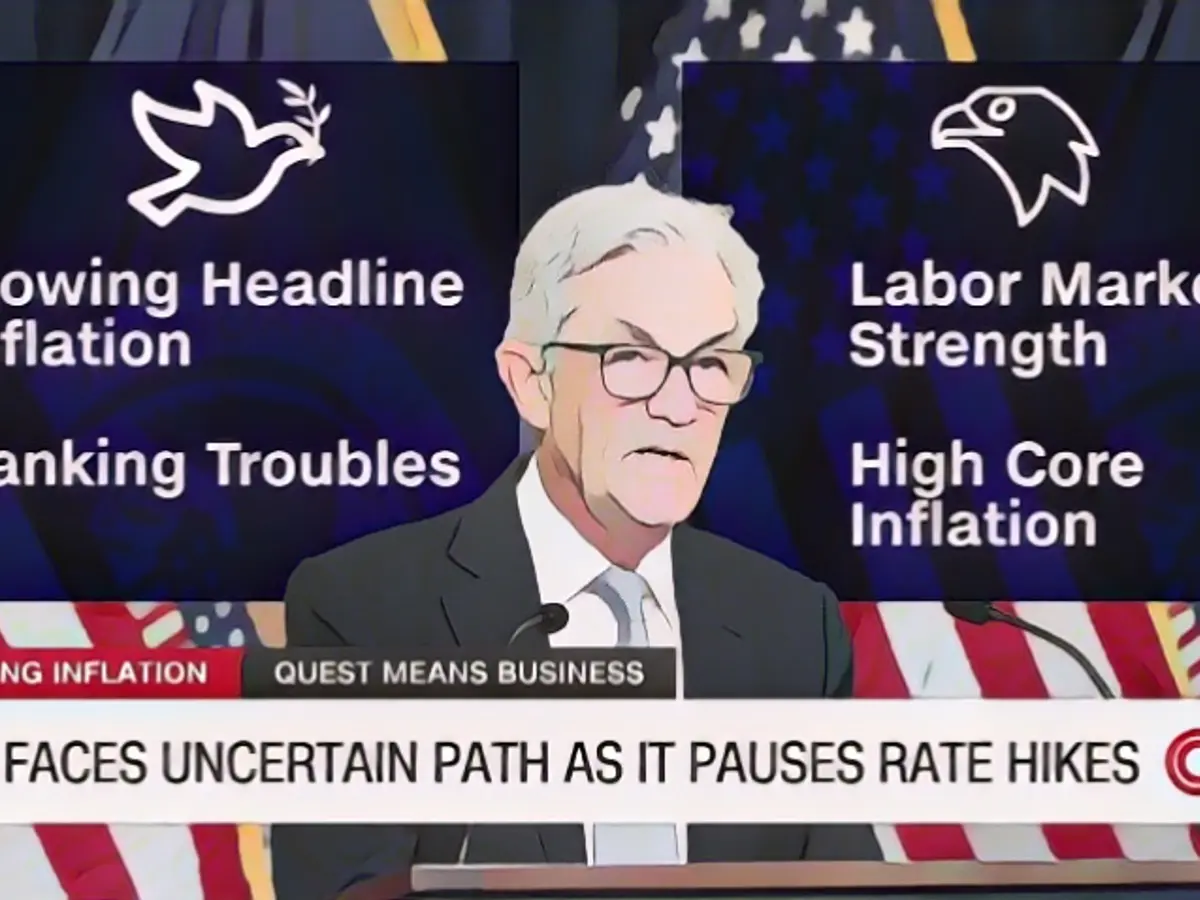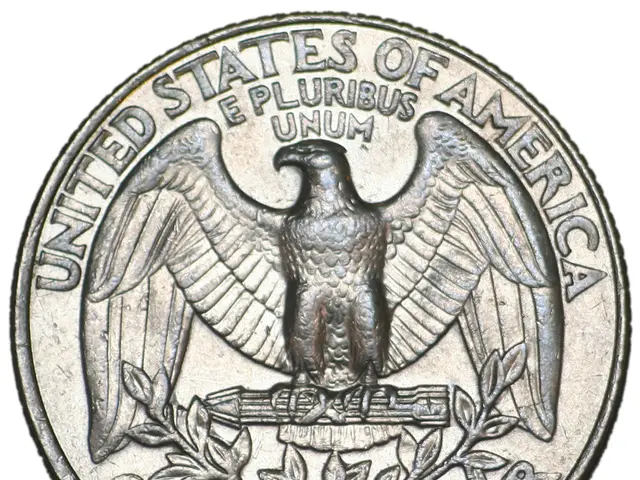Gold Soars to Unprecedented Heights
Gold prices surged by an impressive 3% to reach an astounding $2,135 per ounce on Monday, surpassing the previous record of $2,072 set in August 2020. However, the price took a dip later in the day, recording at $2,023 at 11:57 hrs.
Investors' optimism about the Federal Reserve's ability to curb inflation through aggressive interest rate hikes and planned rate cuts in March 2023 has been on the rise for weeks. Rising interest rates have fueled the returns of risk-free investments like U.S. Treasuries, drawing investors towards them.
However, when interest rates drop, decline, or are expected to decline, the demand for Treasuries decreases. Gold, an interest-free asset, becomes relatively more appealing in such a scenario. The benchmark 10-year Treasury bond yield plunged from its 16-year high of 5% in mid-October to 4.3% on Monday.
Daria Efanova, head of research at the brokerage platform Sucden Financial, noted on Monday that the expectation of an end to the tightening cycle, contributing to a decrease in long-term returns, creates a suitable environment for gold, a non-yielding, non-interest-bearing investment.
John Reade, World Gold Council's market strategist, predicted that the gold price would likely break the Monday's all-time high due to anticipation of multiple interest rate cuts in the coming year. This positive sentiment towards lower interests weighed down the U.S. dollar as well, making gold more attractive for global investors.
Higher interest rates tend to attract more foreign capital into the country, making the U.S. dollar stronger. Conversely, lower interest rates can have the opposite effect. In the last month, the dollar fell by 3% against a basket of six major currencies. Given that gold prices are denominated in U.S. dollars, lower U.S. dollar values can make gold purchasing more favorable for international investors, potentially boosting demand.
Geopolitical Risks Propel Gold Demand
Jamie Dimon, CEO of JPMorgan, shared that this could be the most dangerous period the world has faced in decades. Investors often view metals as a secure haven due to their finite, readily available nature. Gold’s price has risen by 10% this year.
Reed pointed to the shift in geopolitical landscape as a key factor, including the Russian invasion of Ukraine, escalating tensions between the U.S. and China, and worries surrounding Taiwan. According to him, a more fragmented and volatile world encourages central banks in emerging economies to stockpile gold.
Central banks of emerging economies have been the largest buyers of gold over the past 11 years, averaging around 473 tons (521 tons) annually between 2010 and 2021. However, in 2021, they purchased 1,100 tons of gold, and an additional 1,100 tons by the first three quarters of 2022. The purchasing tempo of 800 tons in 2022 is likely to continue for years, if not decades, Reed said.
In a May survey, almost one-quarter of central banks disclosed that they planned to increase their gold reserves in the next 12 months. Victoria Scholar, Investment Director at Interactive Investor, stated, "Increased geopolitical risks have stoked investor appetite for secure havens like gold. Besides the Israel-Gaza conflict and Zinssenkung by the Federal Reserve, the prevailing uncertainty has pushed up gold prices."








